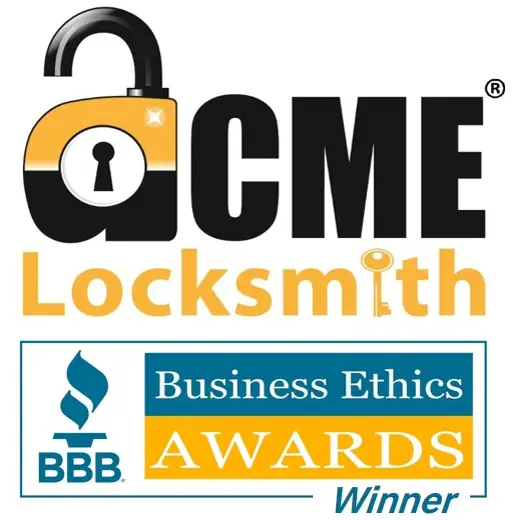Last Updated on July 22, 2024

4 Steps to Adjust Closer | Closer Adjustment Screws | Video Demonstration | FAQ
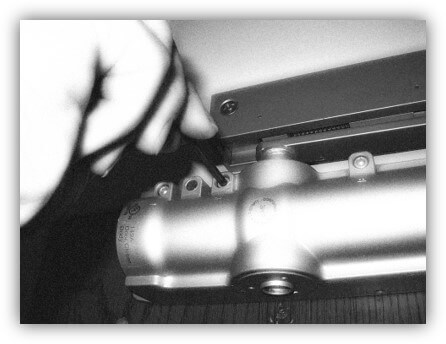
A hydraulic door closer is a mechanical device that automatically closes a door using springs and a system of chambers filled with hydraulic fluid.
You do not need to hire a locksmith to adjust a door closer, if the door closer is in good condition.
To adjust a door closer, use either a screwdriver or a hex key (depending on the brand of closer). Make minor adjustments to the swing speed (S), latch speed (L), back check (B), or delayed action by turning the screw less than 1/8 turn. Counterclockwise increases speed/force, clockwise decreases it. After turning a screw, test the door, and repeat as needed.
Proper door closer adjustment ensures the closer will last longer and that the door itself will last longer. An improperly installed or malfunctioning closer will negatively impact the door and/or its framing.
CAUTION: Improperly adjusting a hydraulic door closer can be dangerous and cause serious harm. We have seen door closer pieces stuck in walls. Attempt all adjustments at your own risk. Hire a licensed commercial locksmith if you have any concerns.
4 Steps for Proper Door Closing
1: Remove the Cover to Access the Adjustment Screws
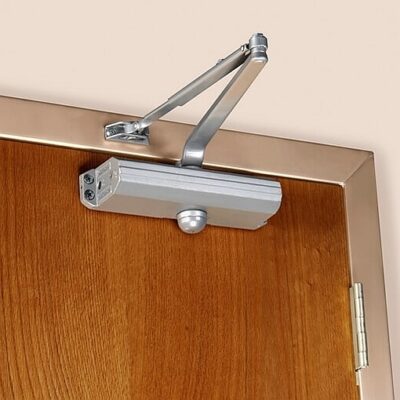
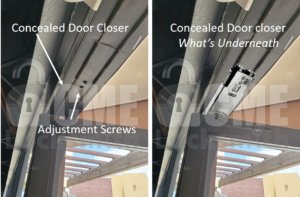
The most common door closers are Surface Mounted. To access their hydraulic valve adjustment screws, you only need to remove the door closer cover.
Some covers are held on by tension alone. Some may be held on by a couple of screws located on the sides of the cover. The screws will be easily visible.
The second type of closer is a concealed door closer. The body of these closers is hidden in a ‘pocket’ at the top of the door frame (or within the door itself).
The adjustment screws for the concealed door closers are accessed via holes present in the frame.
2. Inspect the Closer to See if it Must be Replaced
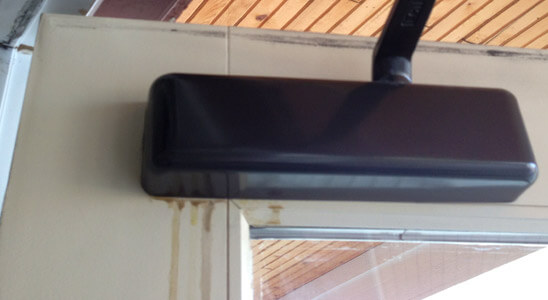
If your door closer has failed, adjusting it will not solve your problem.
To determine if you need to replace your door closer, look for any visible oily leaks or oil stains around where the closer is housed. If you see oil, stop. There’s no need to go further. A leaking door closer must be replaced.
To learn why this oil is so important, see our article on How Door Closers Work.
If you are skilled with tools, you can likely replace a leaking surface mount door closer on your own. You can find many commercial door closers on Amazon for good prices. Concealed door closers should only be replaced by a skilled, licensed, commercial locksmith.
3. Make Small 1/8 Inch Turns to the Adjustment Screws
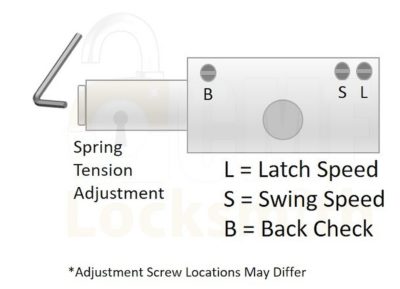
When making adjustments to the door closer screws, makes very slight turns, 1/8 turn at a time. Small turns make big differences in the door closer operation. Counterclockwise turns increase speed/force. Clockwise turns decrease it.
The two main door-closing issues are either the door is slamming shut or the door is not shutting fully.
These issues can be resolved with the adjustment of two valves, the sweep speed valve (labeled S) and the latch speed valve (labeled L).
Swing speed You want the door to close in 7-9 seconds.
Latch speed If the door is not fully closing or slamming (staying open an inch or so), adjust the latch speed.
A detailed explanation of available hydraulic closer adjustments is below.
The process for adjusting any of the valves is the same for each.
One VERY important thing to note before making any adjustments. Do not make large turns that might cause the valve screws to come out. DO NOT, UNDER ANY CIRCUMSTANCES, COMPLETELY UNSCREW A VALVE SCREW!
4. Test the Door & Repeat to Achieve Desired Door Closer Settings
After each slight adjustment, test the operation of the door to see if it is now at its desired rate. If it is not, repeat with another slight adjustment and test again.
Once you have your door closing properly, repeat the test multiple times, even 10 times, to see that it closes properly each time.
If, after a couple of “adjust door closer” attempts, the door does not work consistently, then there may be other issues with the closer.
See our detailed article, “When is it Time to Replace a Door Closer” link
Door Closer Adjustment Screws
To learn why these adjustments work, see our article on How Do Door Closers Work?
What is the “S” Screw on a Door Closer
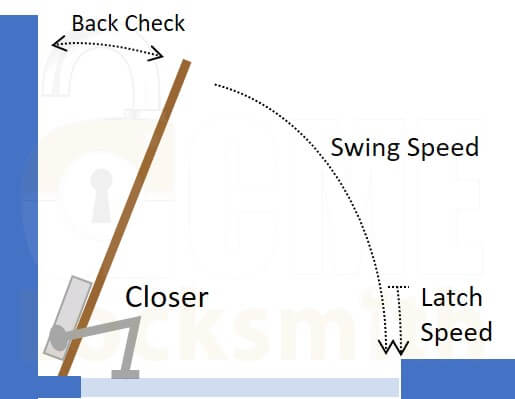
The S on a door closer means “swing speed.” It is the time measured from the door held open at 90 degrees and released, until the time that the door reaches 12 degrees from being fully closed. That time must be greater than 5 seconds.
The door’s closing swing speed (or sweep speed) is adjusted by turning the screw that is labeled with an “S.” In European models, the sweep speed valve will be labeled ‘1’.
Ideally, an open door should close in 7-9 seconds. Phoenix city codes require at least 5 seconds. Be sure to check with your local governing bodies regarding ordinance codes to ensure that you are making adjustments within compliance regulations in your area.
What is the “L” Screw on a Door Closer
The L on a door closer means Latching speed. Latching speed controls the last few inches of the door closing. Latching speed adjusts the door closer to stop slamming or ensure that it closes all the way. Customers often refer to this as the door closer pressure since this makes sure the door holds shut. If the door closer is bad, you will not be able to prevent the door from slamming.
A door’s latching speed is controlled by turning the screw labeled “L”. In European models, the latch valve will be labeled ‘2’.
The latching valve only affects the door when it is in the last moments of closing (10-20 degrees typically). Vestibule entryways, windy areas, and air pressure differences caused by the HVAC between inside and outside are known reasons you may need to adjust the latching force.
NOTE: Door slamming is a sign of door closer failure. If adjusting the latching force doesn’t prevent the slamming, the closer has likely failed and will need to be replaced.
What is the “B” or “BC” Screw
A “B” or “BC” on a door closer stands for Back Check and means how the door’s resistance responds when opening the door past a certain point.
Sometimes we hear customers say that the door is hard to open or that they want us to adjust the tension on the door closer, in these cases they are often referring to back check.
Some hydraulic door closer models allow adjusting the back-check while others don’t.
Adjusting the Door Closer Delay
Delayed Action – You may also be able to adjust the delayed action of the door. When the door is open the delayed action is a delay time that is set to hold the door open for a bit (up to about 30 seconds) before the door proceeds to close.
Video: Adjusting Door Closer & Latch Speed
Demonstration of door closer adjustment.FAQ
Why Won't My Hydraulic Door Close All the Way?
There is not enough closing force in the door closer. Adjust the “L” (latching speed) screw counterclockwise to increase the force. Use 1/8-inch turns. Test and repeat. This can be caused by an AC unit turning on. The inside pressure is stronger and the air wants to escape. If the screw adjustments, or closer replacement, do not fix this, an HVAC team may need to correct the ventilation system.
Which Way Do You Adjust a Door Closure?
When a door closer screw is turned Counterclockwise it will increase the speed or force of that adjustment. Clockwise turns will decrease the speed or force. Always use small 1/8-inch turns and test. A small turn can make a big difference.
Why Is There Oil on My Door Closure?
If you see oil on your door closer, or on the door framing around your door closure, the door closer has failed and it’s time to replace the door closer.
Summary
Adjusting a door closer for speed and latching is a project that most business owners or maintenance staff can easily handle. However, if you see any oil stains in the vicinity of the door closer, you need to replace it right away to avoid liability. Surface mount door closer replacement is a project you may be able to handle based on your skill level, but concealed door closers should only be replaced by a professional, commercial locksmith.
Disclosure: As an Amazon / Google / Home Depot / eBay Associate I may earn from qualifying purchases.
![]()
More of Our Favorite Security Products
See our Amazon Store for Videos and Links to All of Our Favorite Security Products.
Door Armor: Reinforce your doors. This video on YouTube shows the installation of Door Armor, and you can buy this or similar products from Amazon at a great price.
Video Doorbells: This video doorbell offers great images and video and has NO monthly video storage fees. Watch our SkyBell Video Doorbell Review on YouTube and buy it on Amazon.
Smart Locks: Access Your Locks via Smart Phone. You’ll find some of our favorite smart locks that allow you to control home access and monitor entry in our Amazon Smart Lock Shop. Watch our Smart Lock Comparison Video on YouTube for reviews of the most popular Smart Locks.
High-Security Safes: When you want a safe that is designed to protect the valuables you put inside, you want a high-security safe found on ACME Locksmith’s Safes for Sale website.
Sliding Glass Door Lock: The best Arcadia door lock that stops your sliding glass door from being lifted out of its tracks and prevents little ones from opening the door and leaving the home. Check out the video on YouTube and Buy it on our website.
